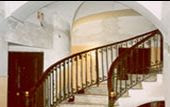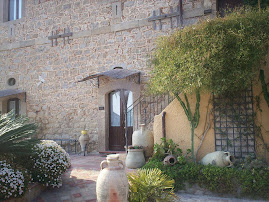
The summer initiative “Musei d’estate. Quando l’arte diventa spettacolo” (Summer Museums. When Art becomes a Show) kicks off in July for its second year of culture, entertainment and novelties. Promoted by the Cultural Local Authority of the Municipality of Rome, in collaboration with Zètema Culture Project, the initiative presents visits, readings and exclusive shows such as classical concerts, the opening of restricted monuments and museums, and guided visits around the town.
3-6 Jul: Invisible Markets- Guided evening visits within the Trajan Markets, with a live music show to close each tour.
Admission: €7 (first round: 20.45, second round 22.30)
Trajan Markets, Via IV Novembre 94 (M Colosseo ‘B’ line)
10-20 Jul: Summer in Show – Concerts by Cellodouble and the “Visioni” ensemble; readings of “Le Elettra” and Caesar’s homicide in “15 marzo 44 a.C.”
Admission: free, booking required (21.30)
Trajan Markets, Via IV Novembre 94 (M Colosseo ‘B’ line)
9 Jul: Germano Mazzocchetti Ensemble- popular music concert featuring accordions, saxophones, clarinets, violas, guitars, double-bass, drums and percussions, all ready to improvise.
Admission: free, until available seating (21.00)
Museo di Roma in Trastevere, Piazza Sant'Egidio 1/b (Trastevere)
15 Jul: Whim’n Rhythm in Concert- in collaboration with the American embassy, one of USA’s most appreciated ‘a cappella’ groups from Yale University singing jazz and popular pop songs.
Admission: free, until available seating (21.00)
Museo di Roma in Trastevere, Piazza Sant'Egidio 1/b (Trastevere)
25 Jul: Lyricamerica Concert- The PianoFortissimoPercussionEnsemble group will perform music by Ravel, Dukas, Gershwin and Bernstein, with participations by Arianna Miceli and Massimo Simboli.
Admission: free, until available seating (21.00)
Museo di Roma in Trastevere, Piazza Sant'Egidio 1/b (Trastevere)
29-30 Jul, 5 Aug: Concerti di musica da camera- in the courtyard of the Palazzo dei Conservatori, in the Capitoline Museums, the Keplero Ensemble performs Blatti, Schumann, Brahms, Giandomenico, Vivaldi, Rossini and Berwald.
Admission: free, until available seating (21.30)
Musei Capitolini, Piazza del Campidoglio 1 (M Colosseo ‘B’ line)
This article comes from the publication, The Roma Forum.
www.theromanforum.com




















